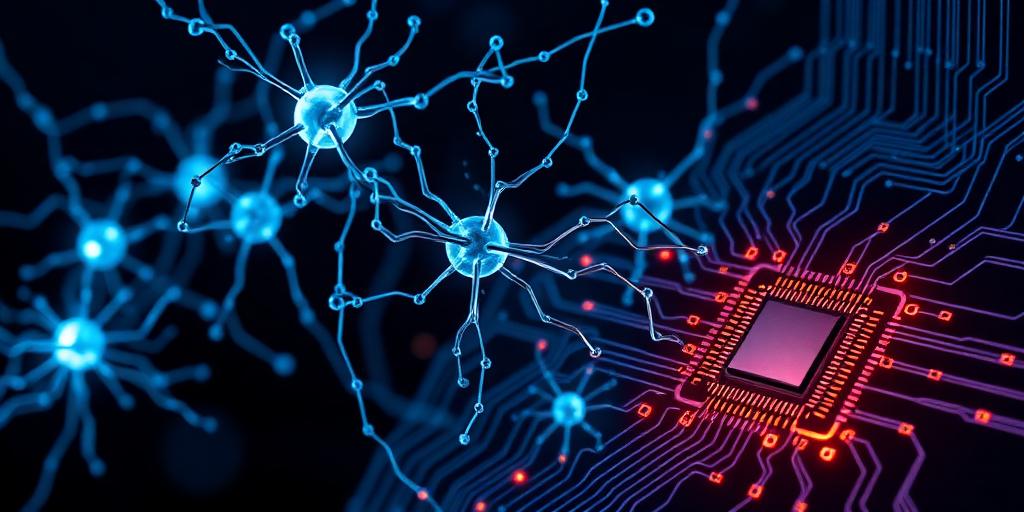The Profound Potential of Neuromorphic Computing
The quest for more efficient and powerful computing systems has driven technological innovation for decades. As traditional silicon-based architectures approach fundamental physical limits, a new paradigm is emerging: neuromorphic computing. Inspired by the human brain's unparalleled efficiency and parallel processing capabilities, neuromorphic systems promise to revolutionize artificial intelligence, edge computing, and beyond. This article delves into the inherent potential and transformative implications of this brain-inspired computational approach.
Understanding Neuromorphic Computing
At its core, neuromorphic computing seeks to emulate the structure and function of biological neural networks. Unlike the conventional Von Neumann architecture, which separates processing and memory, neuromorphic chips integrate these functions. They are composed of artificial neurons and synapses that process and store information in a highly parallel, event-driven manner. This intrinsic design allows for remarkable energy efficiency and a capacity for learning and adaptation that conventional systems struggle to achieve.
The fundamental principle behind neuromorphic hardware is spike-based communication, where neurons transmit discrete electrical pulses (spikes) rather than continuous data streams. This sparse, asynchronous communication mirrors biological processes, significantly reducing power consumption—a critical factor for the future of neuromorphic computing
and its widespread adoption.
Key Advantages Driving Innovation
The advantages offered by neuromorphic computing are multifaceted and address some of the most pressing challenges in modern computation:
- Exceptional Energy Efficiency: By processing information locally and only when necessary (event-driven), neuromorphic systems can perform complex tasks with orders of magnitude less power than traditional CPUs or GPUs. This makes them ideal for battery-powered devices and large-scale data centers aiming for sustainability.
- Massive Parallelism and Scalability: The brain's architecture allows for billions of operations simultaneously. Neuromorphic chips mimic this, enabling highly parallel processing that is crucial for complex pattern recognition, real-time analytics, and advanced AI models.
- Inherent Learning and Adaptation: Neuromorphic systems are designed for on-device learning. Their synaptic weights can be adjusted based on incoming data, allowing them to adapt and learn autonomously, even in real-time. This capability is pivotal for next-generation AI applications.
- Robustness to Faults: Similar to the brain, which can function despite the loss of some neurons, neuromorphic architectures can exhibit a degree of fault tolerance due to their distributed and redundant nature.
Transformative Applications Across Industries
The applications of neuromorphic chips
are vast and poised to disrupt numerous sectors:
- Advanced Artificial Intelligence: From sophisticated pattern recognition in images and speech to real-time decision-making in autonomous systems, neuromorphic computing can accelerate AI workloads. Its ability to perform on-device learning will enable more intelligent edge AI devices, reducing reliance on cloud infrastructure.
- Internet of Things (IoT) and Edge Computing: The low power consumption of neuromorphic chips makes them perfect for resource-constrained IoT devices. They can enable smart sensors to analyze data locally, reducing latency and bandwidth requirements, thereby enhancing the intelligence of the
brain-inspired computing benefits
at the network's edge. - Robotics and Autonomous Systems: Neuromorphic processors can provide robots with more human-like perception, learning, and decision-making capabilities, allowing them to navigate complex environments, interact naturally, and adapt to unforeseen circumstances.
- Big Data Analytics and Scientific Computing: The ability to process vast datasets with high efficiency opens new avenues for insights in scientific research, financial modeling, and complex simulations.
Challenges and the Road Ahead
Despite its immense promise, neuromorphic computing faces significant hurdles. Developing scalable hardware, creating efficient programming models, and integrating these systems into existing infrastructure are considerable challenges in neuromorphic engineering
. Furthermore, establishing a robust software ecosystem and training developers in this fundamentally different paradigm are critical for widespread adoption.
However, ongoing research and investment from industry leaders and academic institutions underscore the necessity and long-term vision for this technology. As advancements continue in materials science, chip design, and algorithmic development, the barriers to entry will undoubtedly diminish.
Conclusion
Neuromorphic computing represents a profound shift in how we conceive and build computational systems. By drawing inspiration from the ultimate biological computer—the human brain—we are unlocking unprecedented levels of energy efficiency, parallel processing, and adaptive intelligence. While the journey from laboratory to widespread commercialization presents intricate energy-efficient AI hardware
development challenges, the transformative potential of neuromorphic computing to power the next generation of AI, IoT, and autonomous systems is undeniable. It is not merely an incremental improvement but a foundational change that will redefine the landscape of computing.









